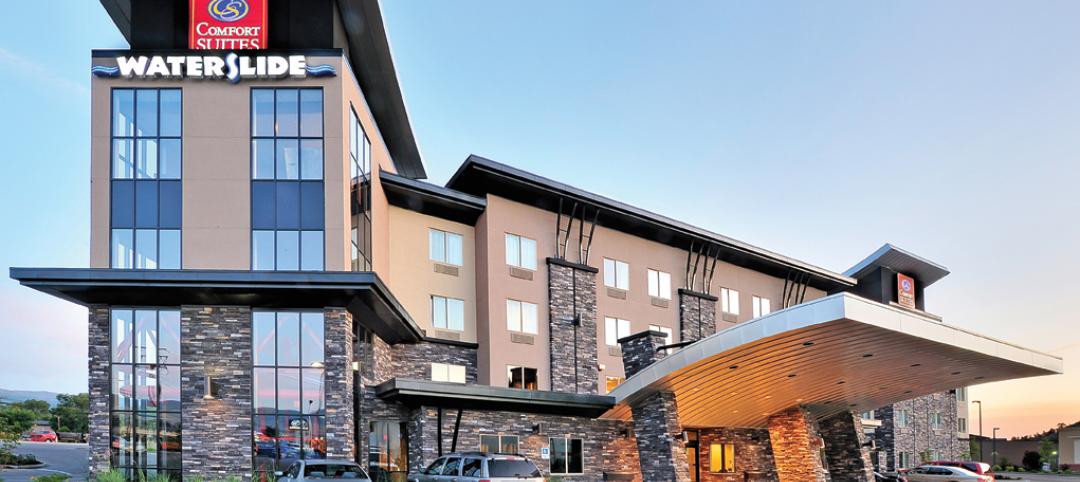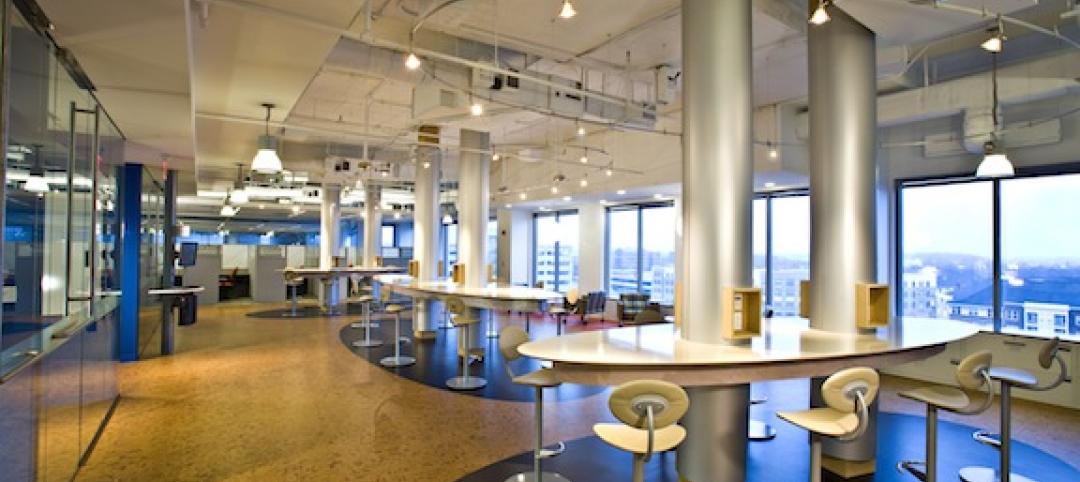The new Richland Two Institute of Innovation is a unique educational center supporting multigenerational learning. The facility is part of the Richland School District Two in Columbia, S.C., and is envisioned as a “fishbowl of learning” that weaves together spaces and programs for the school district as well as the community.
The Institute offers specialized classes for juniors and seniors from Richland Two’s five high schools, as well as provides comprehensive training and certification programs for adult learners throughout the area. The two-story, 245,000 sq. ft. building also offers community resources including a public library, public meeting rooms, shared auditorium, dining and conference areas as well as Richland Two’s District Office and training facilities.
The building can accommodate up to 800 people for workforce development classes and professional workshops. It was constructed as a design/build partnership between the architectural firm LS3P and M.B. Kahn Construction Co.
The highly contemporary design employs an inviting and colorful palette of materials including four different PAC-CLAD profiles in a variety of exterior and interior applications. The design team selected Petersen’s Reveal Panels as the primary exterior profile. The 22-gauge panels were finished in five complementary colors including Interstate Blue, Silver, Sierra Tan, Slate Gray and Almond.
The PAC-CLAD Reveal Panels were key to the overall design concept. “We wanted the building to have a high-tech, contemporary look but be economical,” said Mary Beth Branham, principal and LS3P’s Columbia office leader. “The district didn’t have a ton of money and needed to allocate available funds as smartly as possible. The PAC-CLAD panels were economical yet offered a nice blend of systems and profiles that could create the contemporary, industrial aesthetic we were going for. And the different colors of the metal panels allowed us to tie the exterior into the interior color scheme.”
The design team integrated the Reveal Panels on the front of the building with a simulated stone veneer, abundant glazing and four clerestories that introduce natural light and also serve as prominent design elements. The rear portion of the structure utilizes pre-cast concrete painted to match the differing colors of Petersen’s metal panels.
In addition to the PAC-CLAD Reveal Panels, three other Petersen profiles were blended into the design scheme. Approximately 10,000 sq. ft. of Tite-Loc Plus panels were used on four clerestory roof elements that help differentiate the main areas of the building. Also, 2,000 sq. ft. of Petersen’s Precision Series HWP panels provide accent areas under many of the windows on the rear portion of the building. PAC-CLAD Flush Panels were also used in various soffit applications.
Installation of all PAC-CLAD systems was done by Watts & Associates, Columbia. “This was a complex job,” said Scott Mathias, vice president and project manager. “LS3P was great to work with. The design team was very open to receiving ideas and suggestions for materials and products. We went to them with the Petersen option based on some of the challenges involved with using a single-skin product on the heights we were dealing with.”
The complexity of the installation was compounded by the use of four different types of metal panels in five different colors. “Determining the transitions between the colors required careful detailing where the various color panels tied in with each other. But again, that was mainly front-end stuff. We made samples to show everyone how we planned to do it and then everyone was on-board,” Mathias said. “Throughout the process, it was a total team effort. All of the players—including the school district—were totally committed to make sure we got it done and got it done right.”
Watts & Associates has a long relationship with Petersen. Scott Mathias was especially complimentary about the assistance he receives from the PAC-CLAD sales and technical support staff based out of Petersen’s Acworth, Ga., plant. “I can call those guys with any question on any job and they’ll find the answer for me. It doesn’t matter if a project is 180 feet in the air or on the ground, they’ll help out on the front end to make sure we’re covered on all aspects of the job. They’re good people with good products.”
Petersen manufactures PAC-CLAD metal cladding products in multiple gauges of steel and aluminum. PAC-CLAD products include standing-seam roof panels, hidden- and exposed-fastener wall panels, flush panels, soffit panels, perforated metal, fascia and coping systems, composite panels, column covers, coil and flat sheet. All are available in full 70% PVDF finish (Kynar) in 45 standard colors that include a 30-year finish warranty. Most colors meet LEED, Energy Star and Cool Roof Rating Council certification requirements. Founded in 1965, Petersen’s facilities are located in Illinois, Georgia, Texas, Maryland and Minnesota. For information on the complete line of Petersen metal products call 800-PAC-CLAD, visit pac-clad.com or write to info@pac-clad.com.
Related Stories
| Mar 8, 2011
ThyssenKrupp Nirosta, Christian Pohl GmbH supply stainless steel to One World Trade Center
Corners of the One World Trade Center 's facade will be edged with stainless steel made in Germany. ThyssenKrupp Nirosta (Krefeld) produced the material at its Dillenburg plant using a customized rolling and heat-treatment process. Partner company Christian Pohl GmbH (Cologne) fabricated the material into complex facade elements for the corners of the New York City skyscraper.
| Feb 11, 2011
Four Products That Stand Up to Hurricanes
What do a panelized wall system, a newly developed roof hatch, spray polyurethane foam, and a custom-made curtain wall have in common? They’ve been extensively researched and tested for their ability to take abuse from the likes of Hurricane Katrina.
| Feb 9, 2011
Kingspan Insulated Panels Announces Path to NetZero Mobile App
Kingspan Insulated Panels North America, a global manufacturer of insulated metal panels, announces the availability of its new Path to NetZero mobile app. Introduced at Greenbuild 2010, this unique tool for the building industry simulates the process of achieving high-performance and net-zero buildings.
| Jan 4, 2011
Product of the Week: Zinc cladding helps border crossing blend in with surroundings
Zinc panels provide natural-looking, durable cladding for an administrative building and toll canopies at the newly expanded Queenstown Plaza U.S.-Canada border crossing at the Niagara Gorge. Toronto’s Moriyama & Teshima Architects chose the zinc alloy panels for their ability to blend with the structures’ scenic surroundings, as well as for their low maintenance and sustainable qualities. The structures incorporate 14,000 sf of Rheinzink’s branded Angled Standing Seam and Reveal Panels in graphite gray.
| Dec 17, 2010
Gemstone-inspired design earns India’s first LEED Gold for a hotel
The Park Hotel Hyderabad in Hyderabad, India, was designed by Skidmore, Owings & Merrill to combine inspirations from the region’s jewelry-making traditions with sustainable elements.
| Dec 17, 2010
Cladding Do’s and Don’ts
A veteran structural engineer offers expert advice on how to avoid problems with stone cladding and glass/aluminum cladding systems.
| Dec 7, 2010
Product of the Week: Petersen Aluminum’s column covers used in IBM’S new offices
IBM’s new offices at Dulles Station West in Herndon, Va., utilized Petersen’s PAC-1000 F Flush Series column covers. The columns are within the office’s Mobility Area, which is designed for a mobile workforce looking for quick in-and-out work space. The majority of workspaces in the office are unassigned and intended to be used on a temporary basis.













